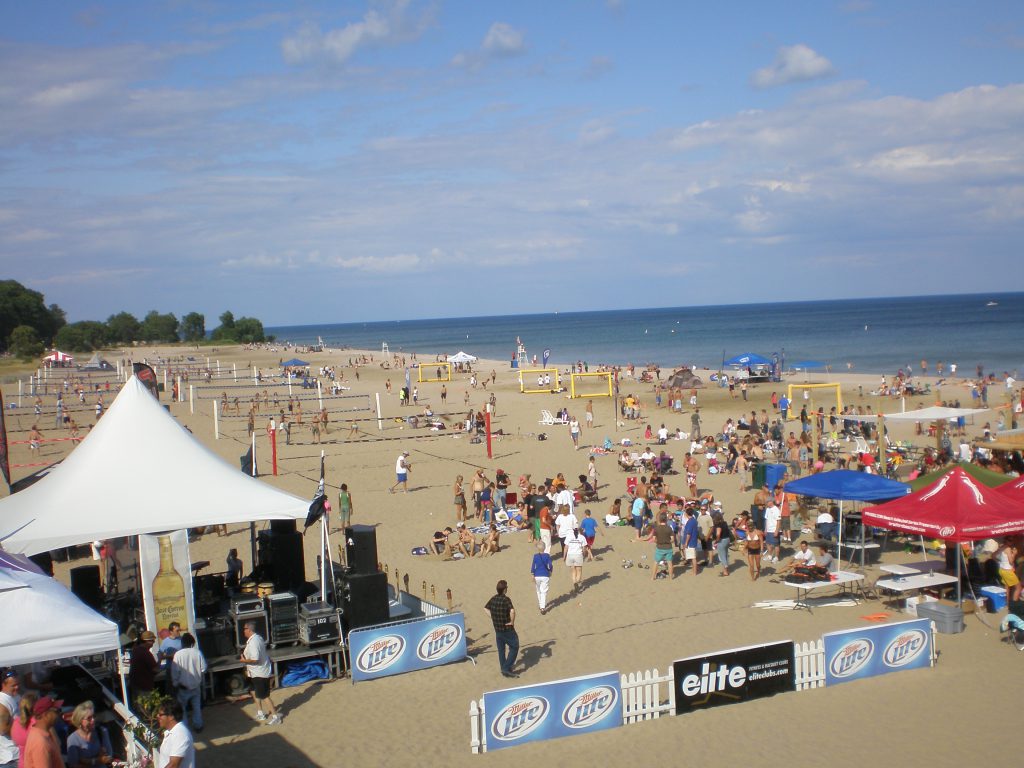Milwaukee Beach Ambassadors Hope to Prevent Drownings
Ambassadors try to educate beachgoers on water quality, flag warning systems and rip currents.
During the COVID-19 pandemic, more people headed outdoors to feel safe spending time with friends and family. And for many in Wisconsin, that meant heading to the beach.
But with more people on the water comes the possibility for more accidents. The year 2020 was Lake Michigan’s deadliest on record, according to the Great Lakes Surf Rescue Project. And in recent weeks, two children drowned in Racine, and a Madison man drowned in Door County.
The spike in deaths prompted a group of Milwaukee-area nonprofits to create a Beach Ambassador program to monitor the city’s Bradford and McKinley beaches.
The ambassadors hope to educate beachgoers regarding water quality, the flag warning system and dangerous rip currents. The four ambassadors will work from 11 a.m. to 2 p.m. Thursday to Sunday through the summer.
“All of us encourage people to use the water, because we have Lake Michigan right here,” said Teresa Coronado, a program manager at the Milwaukee Community Sailing Center who has led the Beach Ambassador program. “But that also means a lot of people who have never interacted with the water, besides just looking at it, are getting into the water and find themselves overwhelmed.”
Dr. Deidre Peroff, a social scientist with Wisconsin Sea Grant, said many people are unfamiliar with the realities of swimming in a large lake.
“It is fantastic that so many beachgoers have come out to enjoy Lake Michigan and our beaches, but many come from different backgrounds and a wide variety of levels of swimming competency,” Peroff said.
Being aware of weather and water conditions are also important.
On Wednesday, the National Weather Service issued a warning for people to stay out of the water and away from dangerous areas like piers and break walls because of possible rip currents.
Coronado said if a person gets caught in the rip current, “flip onto your back, float and follow the shore line shoreline.”
“Let the current push you around until it drops you, and then you can swim back,” she said.
Every year in the United States there are nearly 4,000 estimated fatal unintentional drownings, including boating-related drownings, according to the Centers for Disease Control and Prevention. That is an average of 11 drowning deaths per day.
Drowning death rates vary from state to state. The annual age-adjusted drowning death rate in the United States during 2015-2019 was 1.23 deaths per 100,000 people. In Wisconsin, it was 1.13 per 100,000 people, according to the CDC.
Milwaukee Beach Ambassadors Hope To Educate Swimmers, Prevent Drownings was originally published by Wisconsin Public Radio.
Listen to the WPR link here.



















We keep calling these amazing bodies of waters lakes. They are not. They are freshwater, inland seas subject to similar forces as the oceans. There are no rip tides on lakes. Lakes do not generate hurricane-forced storms (Gales of November.) Lakes don’t have seagulls. I am somewhat reassured by the closure of McKinley Beach to swimming. However, we need to teach greater respect for the power and awesomeness of Lake Michigan.